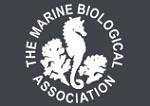APHOTOMARINE
An educational resource dedicated mainly to the photography
and diversity of marine life that can be found in coastal waters
and intertidal areas of Great Britain and Ireland by David Fenwick.

Sub-class calcaronea
- on glass 1
Calcareous sponge
Sub-class calcaronea
- on glass 2
Calcareous sponge
Sub-class calcaronea
- close-up 1
Calcareous sponge
Sub-class calcaronea
- 0.1mm division rule 1
Calcareous sponge
Sub-class calcaronea
- 0.1mm division rule 2
Calcareous sponge
Sub-class calcaronea
- glass sheet where found 1
Calcareous sponge
Sub-class calcaronea
- spicules 0.1mm division rule 1
Calcareous sponge
Sub-class calcaronea
- spicules 0.1mm division rule 2
This potentially novel small 6mm wide specimen was found on a piece of glass that was trapped between rocks on the extreme lowershore at Albert Pier reef, Penzance, Cornwall. 11.03.20.
The following species were found on the same piece of glass-
Hippothoa flagellum
Callopora lineata
Celleporella hyalina
Tubulipora sp.
Austrominius modestus
Verruca stroemia
Clava multicornis
Rosalina globularis
Halyphysema tumanowiczii
Spirobranchus lamarcki
Fabriciidae / Fabricia sp.?
Thank you to Michelle Klautau for determining the specimen belongs to the sub-class calcaronea. Sadly identification could not be taken further because of a lack of material and without microscopic images that provide details of the skeletal organisation of the spicules, which is so important in enabling identification to genus or species level.
I'll endeavor to find more and see if we can get the species identified or described next time around.
APHOTOMARINE supports open source data recording and sharing for the benefit of wildlife, recorders, research, science and education. The project recommends the following websites and works with the following bodies and organisations.
A website based on Sponges of the British Isles 1992 Edition, revised and extended, 2007, by Bernard Picton, Christine Morrow & Rob van Soest. Without a shadow of a doubt the best online resource to sponges of Britain and Ireland.
The Marine Biological Association or MBA, based in Plymouth, is one of the world’s longest-running societies dedicated to promoting research into our oceans and the life they support. Since 1884 the MBA has been providing a unified, clear, independent voice on behalf of the marine biological community.It has a growing membership in over 40 countries.
The National Biodiversity Network or NBN is a charity that supports open source data sharing and recording supporting conservation, science and education. "Why do recorders need open source?". Simply because it supports the core values of wildlife recording and the free use of records and data over a very wide network that includes partners like the Natural History Museum.
The taxonomy used here is based on that of the following database, which is also used by the MBA, NHM and the NBN.
The World Register of Marine Species or WoRMS.

